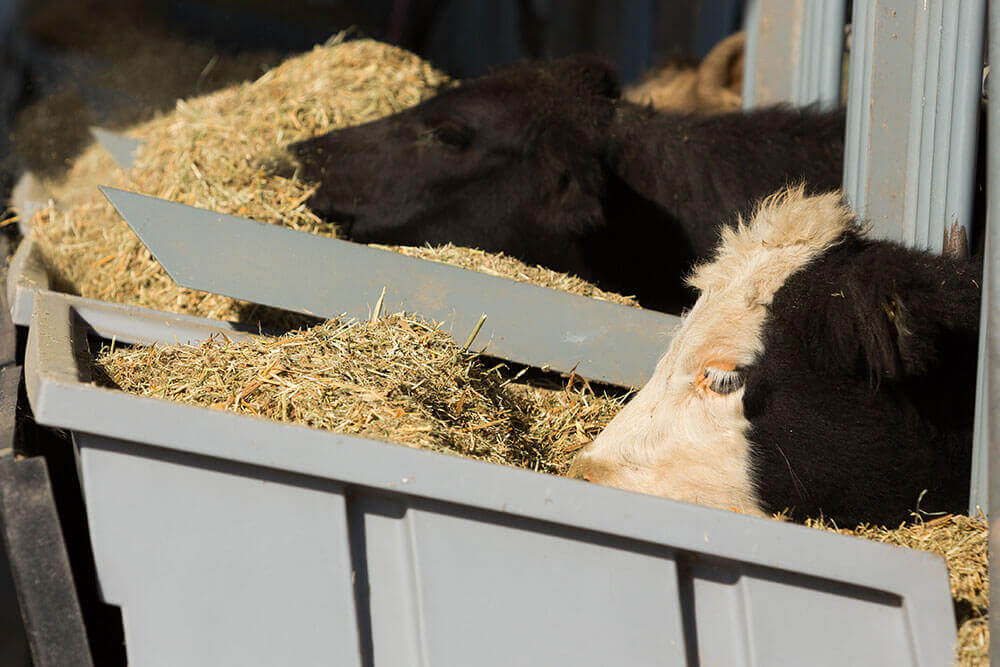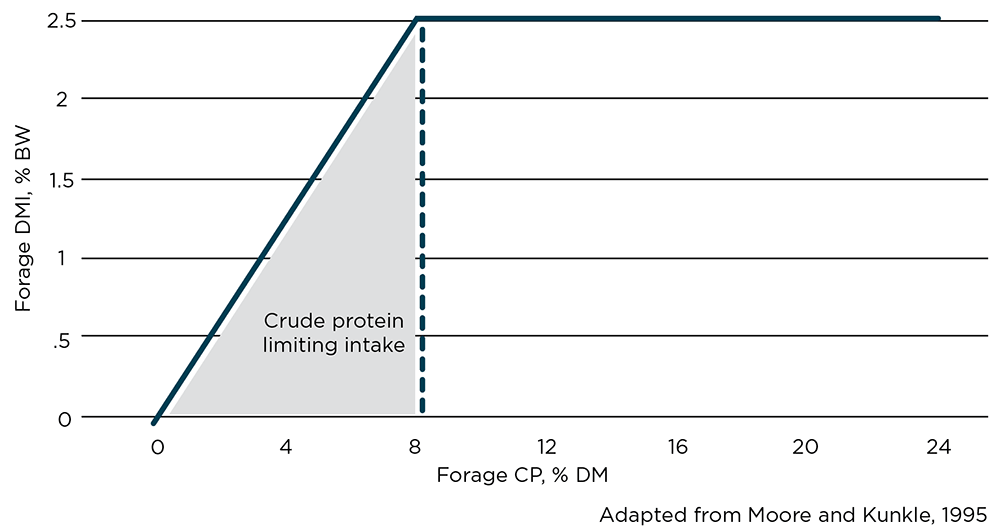As a ruminant nutritionist and livestock consultant, I spend the vast majority of my time discussing the nutrient requirements of beef cattle. More specifically, discussing the “king” and “queen” of the beef nutrition world: protein and energy. Whether a producer is backgrounding calves, developing heifers or getting through the winter, these are the two nutrients that dominate conversation, concern and price tag. However, these nutrients are far too often considered separate entities. You usually know if you’re deficient in one or the other, or maybe both, but it’s rarely considered that these two work in synchrony as complements.
Nutrient synchrony is the concept that pairing the availability and fates of different nutrient substrates can increase digestibility, utilization and/or absorption of those nutrients. Synchronizing nutrients goes beyond meeting the textbook requirements of animals and considers nutrient compatibility.
No nutrient acts alone; many are catalysts with enzymatic actions or antagonists for other nutrients. The thing to keep in mind is that source is key. Not all proteins are alike, nor are all carbohydrates or even mineral chelates alike. The protein in cottonseed meal is not the same protein that is in dried distillers grains, and they may interact differently with the carbohydrates in your forage source to yield different performance results. The secret is all in keeping the rumen microbes happy.

4 Types of Protein
To understand nutrient synchrony of protein and energy, it’s vital to understand the four protein types and whether they are microbe- or animal-primary.
Animal-Primary
1. Rumen undegradable protein (RUP)
Sometimes referred to as “bypass protein,” this protein source is not able to be digested by rumen microbes and passes through the rumen to the small intestine for absorption and utilization.
2. Microbial crude protein (MCP)
Microbial cells that pass from the rumen to the small intestine and can be absorbed and utilized for biological processes. High MCP can be considered a sign of a wellfed rumen with healthy microbial growth.
3. Metabolizable protein (MP)
A combination of RUP and MCP, MP is any protein that makes it to the small intestine for absorption and utilization.
Microbe-Primary
4. Rumen degradable protein (RDP)
Easily broken down by microbes in the rumen, providing essential nitrogen for microbes to initiate feedstuff digestion.
Not all feedstuffs are created equal nor are the nutrients they contain. If you pay close enough attention and take note of weight gains and changes in animal condition between different supplementation programs, you’ve probably observed nutrient synchrony in action.
How Protein Affects Rumen Function
Generally speaking, dry matter intake of forage as a percent of body weight increases up until crude protein (CP) content reaches 8% of dry matter. Thus, if you are grazing cattle and the pasture forage CP falls below 8% dry matter, cattle will consume less forage, which is why cattle can lose condition so quickly during the winter even if they are spring-calving and at their lowest nutrient requirements for the entire year. The same can be said for cattle on low quality hay at any time of year. They are not only consuming a less-nutrient-dense diet; they’re consuming less volume of said diet as well.
Why the decrease in intake, if more pounds of a less-nutrient-dense diet is needed to meet nutrient requirements? The answer lies within the microbes. When CP falls below the 8% threshold, the rumen microbes responsible for digesting forage feedstuffs cannot maintain adequate growth and functionality. The primary benefit to protein supplementation of grazing cattle on dormant pasture is that of greater digestibility rates due to increased rumen microbe efficiency, and therefore greater intake. When cattle are on poor quality forage and lacking the nutrients to keep the rumen healthy and active, digestibility slows and the rumen stays fuller longer, meaning less nutrients are consumed and absorbed.
Just as protein is needed to adequately digest and utilize carbohydrates in feedstuff, carbohydrate content and source can increase digestibility and microbial efficiency, even those with relatively high protein content.

Research Example: Steam-Flaked vs. Ground Corn to Supplement Wheat Pasture
In a study conducted at New Mexico State University, the effect of supplementing cattle on wheat pasture with either steam-flaked corn or ground corn was evaluated. Wheat pasture is known to be extremely digestible and high in protein — a rapidly digested protein.
The hypothesis was that supplementing such a rapidly fermentable protein with an equally available source of energy would increase the efficiency of rumen fermentation and, therefore, increase nutrient utilization and efficiency of forage. Steam-flaked corn is about 17% more energy-available than ground
corn, making it more rapidly fermentable and a more appropriate pairing for the protein in wheat forage. Cattle supplemented with the steam-flake versus ground corn consumed 19% more forage and were 15% more efficient in digesting the wheat pasture itself — an already highly digestible forage (Hebbert et al, 2016).
Having both nutrients degraded and available simultaneously creates a more efficient microbial environment, meaning your cattle get more out of your feedstuff and you get more out of your investment.
Feed Microbes First
This is not to say you should delve into your feed program so deeply that you know the exact fermentation time of the nutrients in each feedstuff you consider — this is obviously not practical and, at this time, probably not completely achievable. What is important is to understand that when you’re feeding cattle, you’re feeding the microbes first and the animal secondly. Just like your vehicle needs both the correct and clean fuel and oil to run properly, the rumen microbes need the proper protein and carbohydrates (along with minerals and vitamins) in order to digest and utilize forage efficiently.
The primary benefit of supplementation is often to increase microbial efficiency. Subsequent increased animal performance (whether that’s lactation, reproduction or growth) is a byproduct of that investment in the rumen health. When you feed protein to a deficient animal, they are not only making use of that protein, the protein is helping them to make better use of the other feedstuff available to them.
Keep the Rumen Factory Running
There are times to supplement protein to your cattle and times to supplement energy, all depending on the time of year, forage base and phase of production or class of animal. Just keep in mind that you’re always handling a multi-faceted system. There’s so much more going on behind the scenes than what meets the eye and changes to diet often have a cascade of biological effects. It may be helpful to have a different perspective when you read feed tags and consider supplementation types and sources. The purpose of supplementation is not just to meet one nutrient deficiency, it is to keep the whole rumen factory working and using every nutrient, and every penny you invest into those nutrients, as efficiently as possible.


Comment